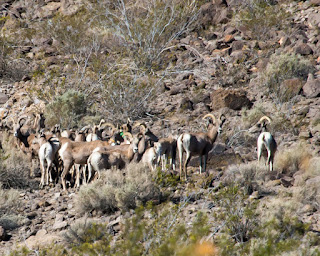Eagle Mountain: Confronting the Industrial Juggernauts

Please Take Action: Send an e-mail by May 27, 2016 to " JOTR_Study@NPS.gov " asking the National Park Service to restore the maximum allowable acreage of the Eagle Mountain area to Joshua Tree National Park. The National Park Service is considering restoring lands removed from what was then Joshua Tree National Monument in the 1950s (it did not become a National Park until 1994), but that restoration may not stop one more giant industrial project from moving forward in the Eagle Mountain area. The land in question was originally removed from the Monument by Congress to allow for the expansion of the Eagle Mountain Mine, but that mine is no longer in operation. Although the massive open pit remains, surrounding desert wildlands still provide important habitat for wildlife, including an important desert bighorn sheep corridor. The Park Service is accepting public comments until May 27, 2016. Mining, Sanitation, and now Energy Industries Stake Clai...
